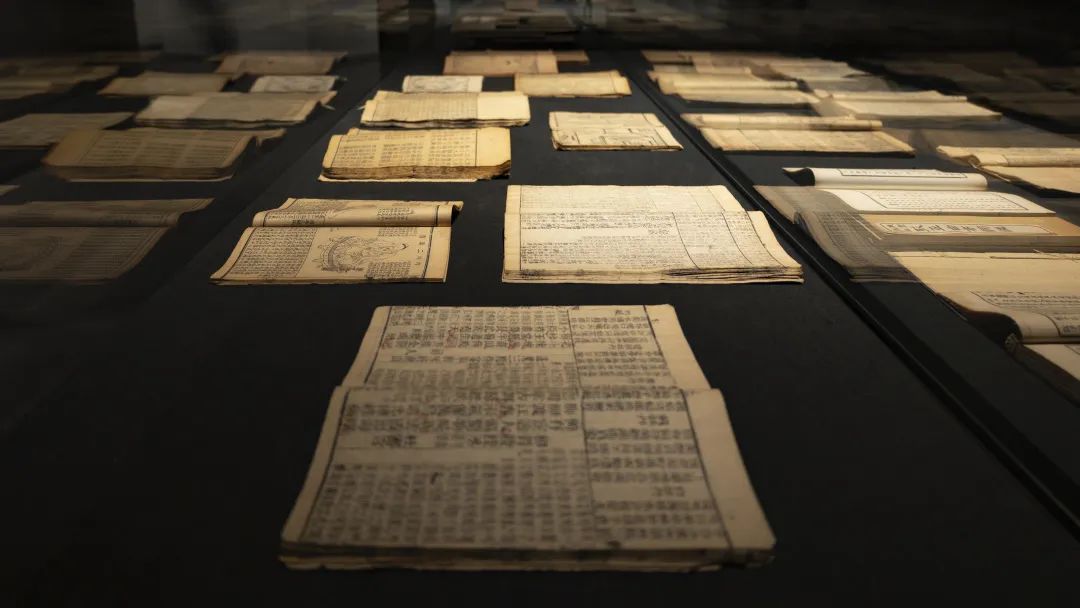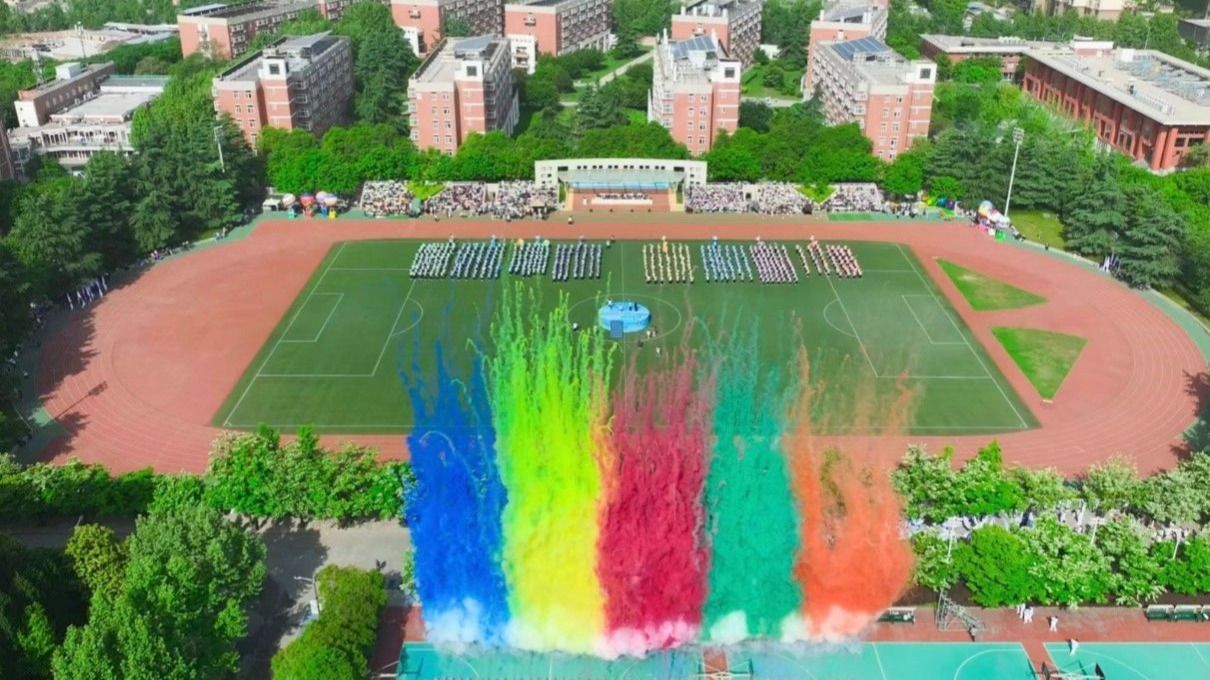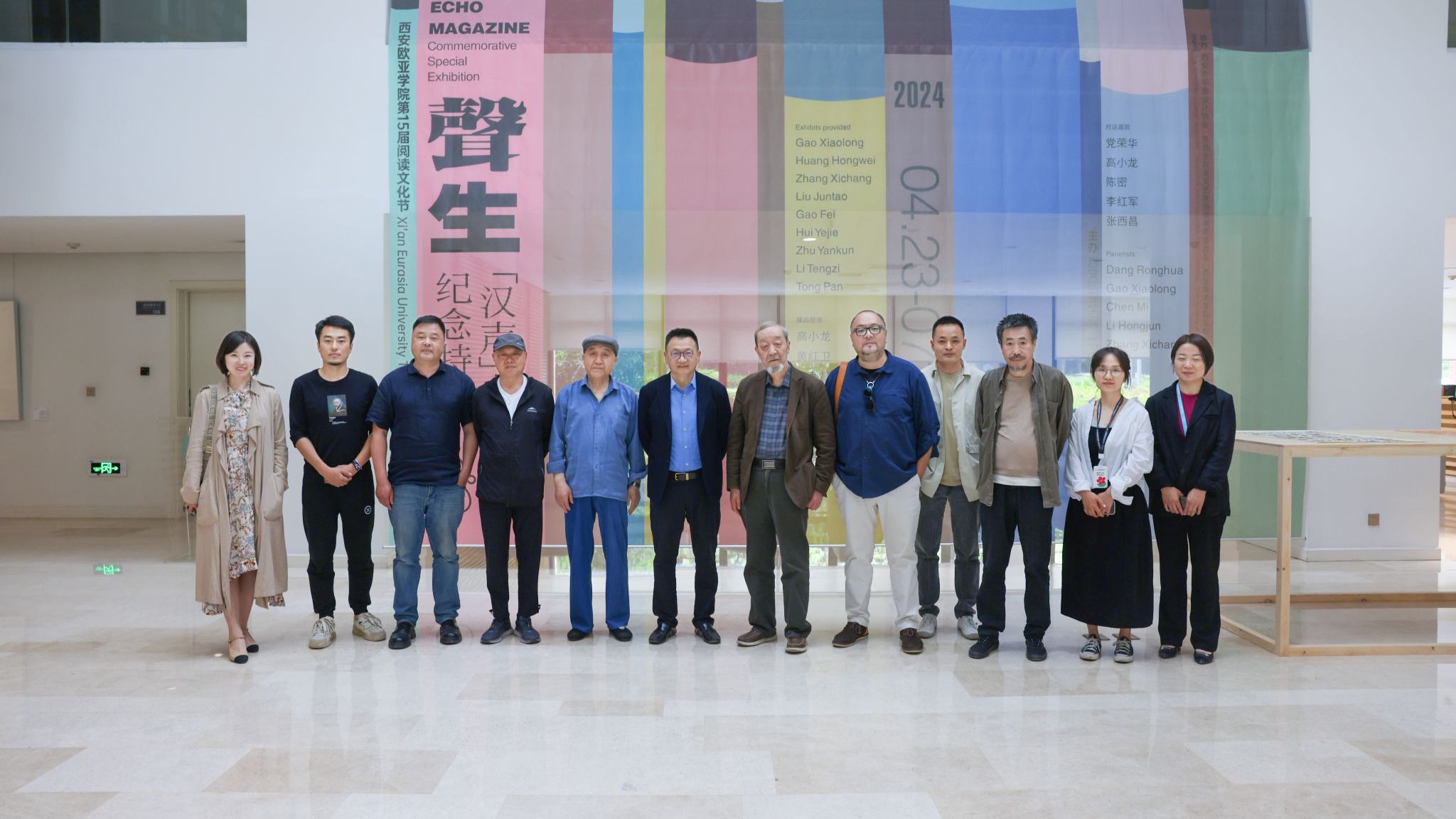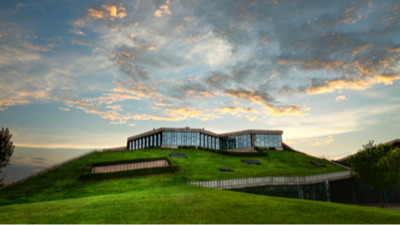The word "museum" comes from the Ancient Greek
"Mouseion" which meant "any place that was dedicated to the
Muses, often related to the study of music or poetry". As non-profit
permanent establishments serving society, museums change with the development
and practice of society. In addition to researching, collecting, protecting,
and showcasing the tangible and intangible heritage, museums in the new era
integrate into the community in a diversified and vivid manner, to provide
multiple experiences for education, enjoyment, reflection, and knowledge
sharing[1]. After two years of waiting, MOD has been comprehensively upgraded
and come to service with a brand-new look on November 24, 2022. We invite you
to go on a journey of design.
What is
MOD?
MOD refers to the Museum of Design of Xi’an Eurasia University.
Established on December 16, 2018, the museum is the second one in China and the
first one in northwest China that is themed on "design". Located in a
university and focusing on the needs of educational concepts and discipline
development, MOD researches and analyzes the history of world industrial design
and visual communication design, exhibiting epoch-making works having profound
impacts on human life.
In the field of education, the core of "design" is the
thinking and practice of "problems and solving" based on
philosophical thinking. MOD presents brilliant "designs" and at the
same time provides a local platform for design research and academic exchanges.
It looks back on the birth of modern design and its diversification today on
multiple dimensions to understand the relationship between social change and
design evolution and to inspire thinking on life, aesthetics, and education.

(Picture 1 MOD)
Surprises
from MOD's Two Pavilions and Two Visitor Routes
No. 1
China Pavilion to explore the aesthetics of Chinese designs
In 2022, MOD adds the China
Pavilion which focuses on the evolution of Chinese characters and the
development of printing replication technology and shows the design culture
from the pre-Qin period to the modern time in four strands: Technology and Media, Evolution of Chinese
Characters, Beginning
of Mass Communication, and Rise of Modern Design.

(Picture 2 Overview of MOD
China Pavilion)
From natural materials such as animal bones, bamboo, wood, and
rocks to man-made products such as bronze, silk, and paper, human beings have
been creating new "designs" while recording life and transmitting
information. The material carriers and spreading modes of information are
constantly changing, and the process of civilization is clearly presented.

(Picture 3 Zhang's 100-Liter
Pottery Pot, Qin Dynasty)

(Picture 4 Inscribed Wooden
Slip, Han Dynasty)

(Picture 5 Rubbings of the
Engravings On Mount Yi in the Qin Dynasty, Copy by Zhen Wenbao in the Northern
Song Dynasty)

(Picture 6 Fragment of Eaves
Tile with Chinese Character "长" (literal meaning of long or grow, Han
Dynasty)

(Picture 7 Woodblock
Printing of the Diamond Sutra (photocopy), Tang Dynasty)

(Picture 8 Ancient Books and
Periodicals)
MOD has reached exhibition cooperation with Mr. Gao Xiaolong, a
famous film and TV director, the chief director of China's national image
promotion video, and the video and image director of the opening and closing
ceremonies of the 2008 Summer Olympics in Beijing. Based on friendly negotiation,
Mr. Gao Xiaolong stored and exhibited more than 200 collections of calendars,
books, pictorials, newspapers, and magazines in the exhibition area for the
"Rise of Modern Design" in China Pavilion, MOD.
With the development of mass communication and the rise of new
urban culture, China's modern designs emerge quietly. From the 1920s to the
1930s, pioneers of China's modern design combined tradition with western art,
fostering a fresh design style from practice. From pictorial magazines such as The Young
Companion, The Modern Miscellany,
and The Cosmopolitan that featured
exquisite, eclectic character styles and illustration designs to commercial
poster designs and calendars featuring visual images presented by images,
colors, character styles, and layout, we can get a glimpse of designers'
exploratory spirit of inclusiveness and innovation at that time. Their
unremitting efforts laid the foundation for the development of China's modern
design.

(Picture 9 Modern Commercial
Poster Design in China)

(Picture 10 Modern Chinese Pictorials, Books, and Magazines)
"The Heaven is subject to changes of climate and weather, the
Earth has different geographical conditions, materials have their unique
qualities, and people possess creation ability and craftsmanship. Combining the
four, we can create exquisite works." In ancient China, people advocated
the interlinkage of technology and art, though a clear definition of design was
not available. MOD China Pavilion demonstrates the aesthetics of Chinese design based on the development of Chinese characters
and media.
No. 2
Modern Design Pavilion to unfold classic and splendid modern designs
The advancement of civilization is fundamentally promoted by
designs constantly explored and created by people in production practice. Human
beings have continuously expanded cognition, transformed the environment
through various unnatural ways, endowed life with meaning, and civilized
history. As an expression of subjective will, we are doing "designs"
when creating new things. Design has been integrating and shaping the world in
a visible way.
In 2022, MOD Modern Design Pavilion traces the origins of modern
design, introducing the Arts and Crafts Movement—the beginning of the modern
design trend, and schools and diversification of modern design. It sorts out
and fills the blank of the exhibition line, bringing together design works of
different types such as books and periodicals, posters, furniture, and
industrial products. It breaks with the convention of dividing exhibition areas
according to design categories, displaying complete and diversified design
development history.

(Picture 11 Overview of MOD
Modern Design Pavilion)
Exhibition area for William Morris,
"Father of Modern Design and Pattern". Morris
advocated art should serve the needs of the public, questioned and reflected on
the negative factors of mechanized production, and praised medieval
craftsmanship and naturalism.
His works were fastidious about simple, practical quality. In his
wallpaper designs, Morris created intricate, stylized patterns based on nature.
His designs featured fresh, vivid natural plants and tensional organization,
bringing a strong natural atmosphere to people's home life.

(Picture 12 William Morris,
1834–1896)

(Picture 13 Strawberry Thief
Wallpaper, 1883)
As the founder of modern design, Morris introduced the epoch-making
social practice and design theory. His printed patterns are still classic
elements of fashion style.
The exhibition area for Morris is set in his iconic wallpaper
Strawberry Thief and reproduces a scene of a house in the 19th century
through antique tables and chairs and Morris's family images, allowing visitors
to immerse themselves in the excellent designs of the 19th century.

(Picture 14 Exhibition Area
for William Morris)
Art Nouveau design works. As the first design movement of the 20th century, Art
Nouveau was influenced by William Morris's ideas and design practice and
highlighted inspiration drawn from nature. With strokes perfectly integrated
into its outlines to create intricate, undulating visual effects, Art Nouveau’s
decorative designs emphasize curved organic shapes; the artists of the period
preferred soft, creamy colors and began to explore the usage of new materials
such as cast iron and glass.
Alfons Mucha was a mater during the Art Nouveau period. His works
incorporated the elegant outlines of Japanese woodcuts, the rich colors and
geometric decorative effects of Byzantine art, and the delicate, ornate depictions
of baroque and rococo art. The “Mucha style” figures he created feature
emotive, decorative lines, concise outlines, and brilliant watercolor effects.
In his depictions pretty, graceful, and youthful female figures, often with
beautiful flowing hair, featured alongside decorative patterns.
MOD Modern Design Pavilion newly exhibits Mucha's four lithographs
that reveal the beauty and elegance of the “Mucha style”.

(Picture 15 Zodiac, 1896)

(Picture 16 Dance, 1898)
Enrich modernism design. The upgraded MOD reorganizes the originally independent exhibition
areas for European and American modern poster design and Japanese modern poster
design. The most classic modern graphic design works of
different styles are selected to show modernist designs of varied schools and
styles. In addition, the new MOD adds an exhibition
area for industrial products, such as the Juicy Salif Squeezer, MT8 Table Lamp,
Olivetti Valentine typewriter, and other unique products with both functionality
and aesthetic value, providing a chance for visitors to see ingenuity and
beauty and experience the fusion of words, graphics, colors, and materials.

(Picture 17 Exhibition Wall
for Area for Modernism Design Posters and Center Exhibition Area for Chairs by
Masters)

(Picture 18 Exhibition Area
for Industrial Products)
No. 3
Space * 2, Flow * 2! Explore the beauty of
Chinese and Western designs in an all-round way.
The new MOD retains the simple,
sophisticated, elegant, and noble design style. It consists of China
Pavilion, Modern Design Pavilion, and Temporary Exhibition Pavilion. Exhibition
halls are mainly decorated in black, white, and gray, paired with delicate
vertical and horizontal textures, to create a space where visitors can immerse
themselves in their experiences.
The MOD originally on the second floor set up the China Pavilion
(332 m2) and Modern Design Pavilion (101 m2) on the first
floor, expanding its total area to 1,073 m2.
After passing the preface hall, visitors can choose which to visit
first—the evolution of Chinese design or the diversification of modern design.
The arrangement of two visitor routes
and two pavilions maximizes the dynamic and fluidity of the exhibition,
creating open and transparent exhibition spaces for visitors of different
sizes.

(Picture 19 Guide to MOD
China Pavilion / Modern Design Pavilion)
In addition, MOD uses professional, customized showcases and lighting equipment according
to the characteristics of different exhibits and exhibition needs. While
objectively, completely, and accurately displaying collections' forms,
textures, colors, and patterns, it also ensures the safety of the exhibits and
meets the needs of visitors to appreciate exhibits or taste the details.

(Picture 20 Lighting of MOD
Central Showcases and Poster Walls)
No.4 Two
special exhibitions unveiled! Appreciate the classic and explore the
diversified possibilities of design.

(Picture 21 "DESIGN TRIO" Design Exhibition)

(Picture
22 Surviving Letters—The Legacy of Corbusier and Jeanneret)
MOD invites you to go on a design journey on November 24, 2022.
Tips
MOD Opening Date
November 24, 2022
Please read the following tips carefully before
entering the museum as required by pandemic prevention and control.
1.
Please wear a mask, keep a safe social distance of one meter, scan Shannxi
Health Code, and show a negative nucleic acid test within 24 hours.
2. The
maximum visitor capacity is 100 in a period of time.
3.
Children under the age of twelve must be accompanied by adults.
4. No
smoking, no carrying or using open flames, and no pets.
5.
Please take good care of the public facilities and do not touch them or carve
paintings at will; otherwise, you may be held responsible for any damage.
6.
Please consciously maintain the order of the museum, do not make loud noises,
and consciously maintain the environmental sanitation of the museum.







